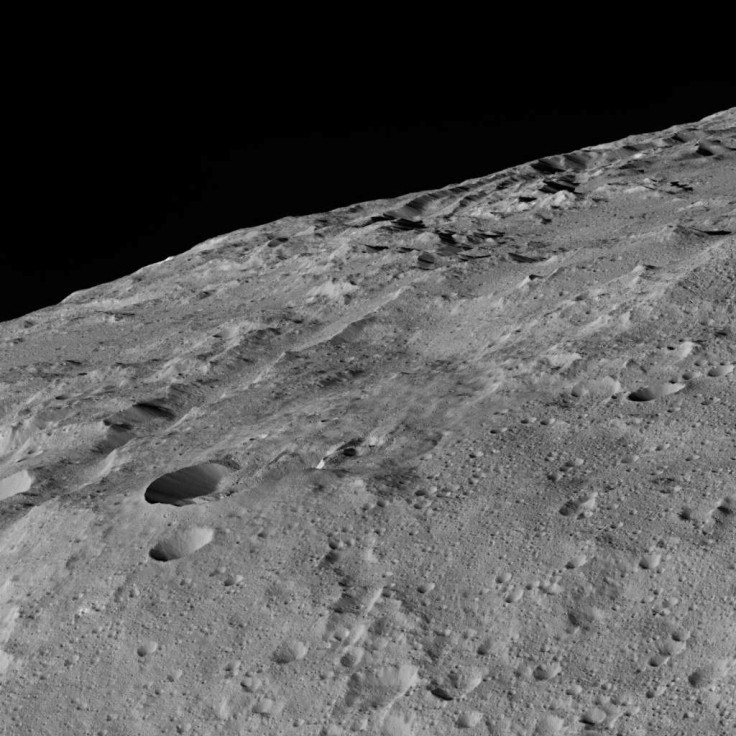Ceres Up Close And Personal: Dawn Captures Best Images Yet Of The Dwarf Planet

The Dawn spacecraft has settled in to its new orbital home of 240 miles from the surface of Ceres. At its current altitude, Dawn will continue to take photographs of the dwarf planet's cratered surface while its scientific instruments identify minerals and elements on Ceres. The first images from Dawn's closest orbit to Ceres focused on the southern hemisphere and the Gerber Catena crater chain.
Ceres' surface is a fractured landscape marked by craters and deep grooves. Many experts believe Ceres' striking surface features were caused by impacts along with stresses from within the dwarf planet. "Why they are so prominent is not yet understood, but they are probably related to the complex crustal structure of Ceres," Paul Schenk, a Dawn science team member, said in a statement regarding Ceres' many grooves.
Ceres is known for its numerous craters, the three largest being Yalode, Kerwan and Urvara. Occator was another crater that gain widespread attention for the mysterious bright spots located in its center. Early in December, scientists identified the bright spots seen in Occator and other areas of Ceres as a type of salt -- magnesium sulfate hexahydrite -- while a second study discovered ammonia-rich clays on Ceres. If there is ammonia on Ceres that could mean the dwarf planet formed in the outer part of the solar system, near Neptune. The two studies were published in the journal Nature.
Mystery solved? Revelations from @NASA_Dawn about the make-up of #Ceres' bright spots: https://t.co/2Zlzl54ctk https://t.co/RMgv3cNDMO
— NASA JPL (@NASAJPL) December 9, 2015Dawn's journey to Ceres began Sept. 27, 2007. The spacecraft launched from Cape Canaveral Air Force Station, Florida, but needed a gravitational assist from Mars in 2009 before it journeyed deeper into the solar system. Dawn's mission objective was the observation of two rocky bodies in the asteroid belt between Mars and Jupiter. Dawn arrived at Vesta in 2011 and spent a year observing the asteroid before departing for Ceres. The spacecraft arrived at the dwarf planet's orbit March 6, 2015.
Slooh will host a special broadcast, beginning at 2 p.m. EST, covering the latest Ceres images. The live stream will include a discussion from Simone Marchi, a planetary scientists, and Slooh astronomer Will Gater. The broadcast will include a live feed of Ceres from Slooh's observatory in the Canary Islands.
© Copyright IBTimes 2024. All rights reserved.






















